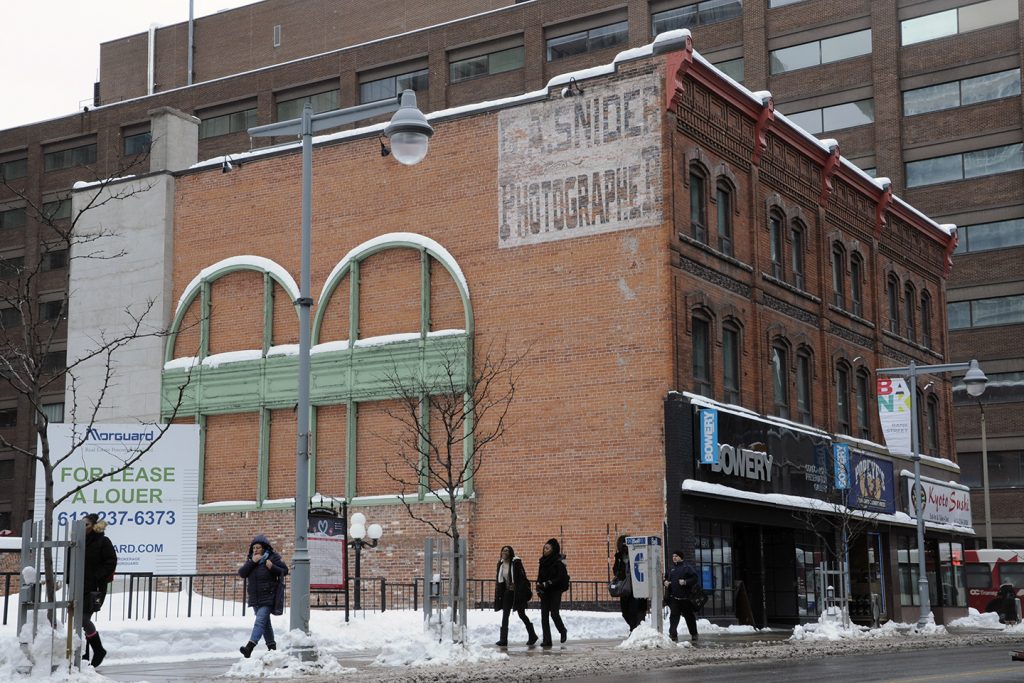Local history buff follows the sign
By Makayla Peacock
Howard Simkover saw the sign and it opened up his eyes to the rich history of G.A. Snider, an Ottawa-based photographer who captured the people of the capital in the 1800s.
While walking downtown in 2011, Simkover passed a faded sign barely visible on the outside wall of a building at the corner of Bank and Slater streets.
The sign, in patchy white and black paint, read “G.A. Snider. Photographer.” It caused an itch, one that would not go away until Simkover knew just who G.A. Snider was.
The history buff’s curiosity mixed with a determination to be the first person to delve into the history of this mystery man from Ottawa’s past: Who was G.A. Snider?
“I began looking into it because I’m curious,” said Simkover. “That’s the simple answer, I became curious. It became a research project where I was trying to find out as much as I could about this particular person.”
He added: “There was a challenge there. I assumed that no one else had looked into him in the depths that I was prepared to do, so I knew I was breaking new ground.”
The journey began there. And the endeavour eventually spanned at least 1,000 hours and included countless trips to the Library and Archives Canada building on Wellington Street.
Simkover was there so much, he said, it led his wife Louise to make a joke about her husband having an affair with someone at the archives.
Simkover’s research odyssey ended with a 565-page study about the history of the sign and of the man behind it.
In the manuscript, Simkover wrote of being interested in the sign and of wanting to know more.
“Who, I wondered, was G.A. Snider? What brought him to Ottawa and when? Where exactly did he live? Did he marry and have children? What has happened with his descendants?” he wrote.
Snider ran a photography shop in Ottawa in the 1890s. The sign on the building appears to have survived because that wall was shielded from the elements by another building throughout the 20th century.
The epic first version of the Simkover’s history of Snider wasn’t the last.
Shortly after releasing the original edition, he decided to release a second — this time with about 30 extra pages. The additional information came from descendants of Snider and various online sources, he said.
The descendants have been a tremendous help, according to Simkover. He added that he is in touch with two of Snider’s grandchildren, both who are now in their eighties.
“They were completely unaware of the sign. So when I first contacted one of them, the person was quite naturally suspicious, because why would I be interested in George Albert Snider when I had no relation to the family,” he said. “But when I talked to him on the phone and I explained to him what I was doing, I sent him a picture of the sign and he became a great ally and a great help to me.”
While researching Snider, Simkover began to find bits of himself in the photographer’s life, including a shared love of being behind the camera.
“George Albert Snider began working in photography when he was around age 15 in Brantford, Ont. A similarity is that I have also been interested in photography since I was very young,” said Simkover. “I began developing black and white film and had my own dark room when I was about age 12.”
The sign that sparked Simkover’s remarkable research project can be seen at 134 Bank St. amidst vacant lots and other old buildings. The property it sits on is owned by Morguard Investments, a representative of which said the company is proud of the history preserved in its buildings. It’s something the company said it intends to keep intact when redeveloping its properties.
“We are planning mixed use of office, retail and residential buildings along Bank Street between Slater and Laurier,” said Bernard Myers, vice-president of Morguard. “The existing buildings have heritage designations and the facades would be incorporated into the new project.”
He added that plans for the area are preliminary as there is no tenant or market for a new office development in the core at the present time.

